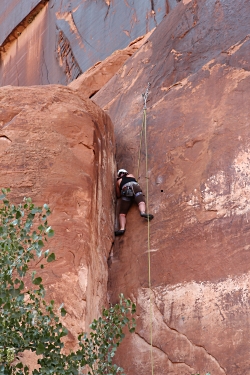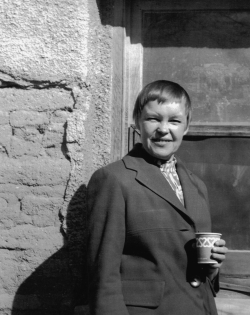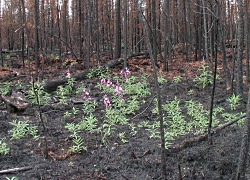
on Potash Road, Moab, UT
Courtesy Wikimedia & Bob Protus (katsrcool), Photographer
Hi, this is Justin Lofthouse from the USU Natural Resource Interpretation Class.
Many might think that rock climbing results from a quest for adrenaline and danger. On the contrary, most rock climbers strive for a calm and controlled state of mind. Many participate in rock climbing for reasons such as solitude, adventure, self-exploration, pushing physical limits and accomplishment. The explosion of the number of people participating in rock climbing over the last decade has altered how many obtain these benefits.
As more and more people are climbing in Utah, it has become harder to find solitude and adventure. This increase in numbers has led to Federal land managers taking a closer look at the impacts caused by overuse. A strong wilderness ethic is vital to the future access of climbing areas.
In a recent poll on mountainproject.com, the question was asked, “What are the top 10, best climbing states?” Among the replies, Utah is almost always among the top three. Canyons such as American Fork, Logan, Maple, Little and Big Cottonwood make northern Utah a top competitor. These steep technical faces offer difficult, continuous routes that push the physical realm of the sport. When southern Utah is thrown into the mix, Utah truly stands out as a gem. Places like Zion, Indian Creek, Moab, and St. George have parallel-sided cracks that split sandstone walls for hundreds of feet. These remote desert regions offer a feeling of adventure and solitude that many areas in the U.S. lack. These qualities have put Utah high on the list as a must-visit climbing destination.
Gone are the days when you and your partner were the only people climbing in an area on a weekend. As information about the amazing climbing in Utah has become readily available, people have come by hordes to explore what Utah has to offer. Although rock climbers will have to find new ways to share such a unique resource, no one is doubting that Utah truly has something special to offer when it comes to rock climbing. It will take a concentrated effort on the part of all climbers to help maintain such a wonderful resource for future generations of climbers.
For Wild About Utah, I’m Justin Lofthouse.
Credits:
Image: Courtesy Wikimedia, Bob Protus (katsrcool) Photographer, licensed under Creative Commons Attribution Generic 2.0
Text: Justin Lofthouse
Sources and Additional Reading
Climbing and Canyoneering, Bureau of Land Management, Department of the Interior,
https://www.blm.gov/ut/st/en/fo/st__george/recreation/rock_climbing.html
Rock Climbing, Capital Reef National Park, National Park Service, https://www.nps.gov/care/planyourvisit/rockclimbing.htm



